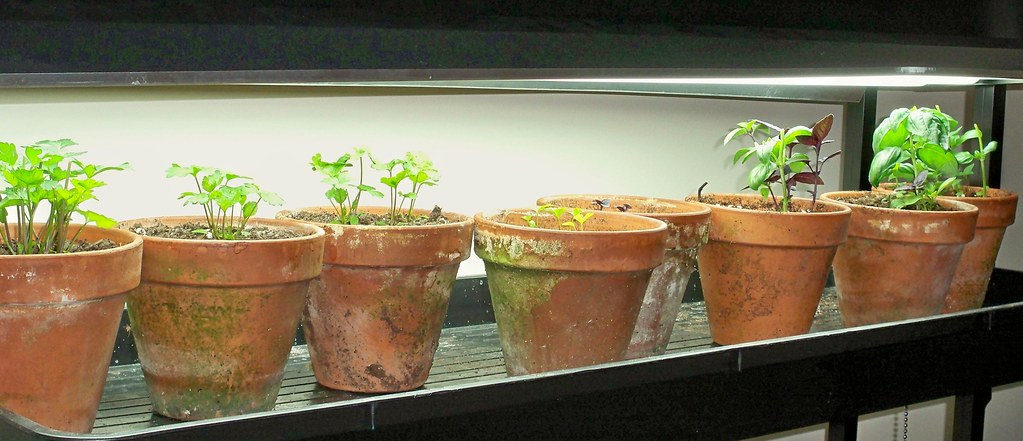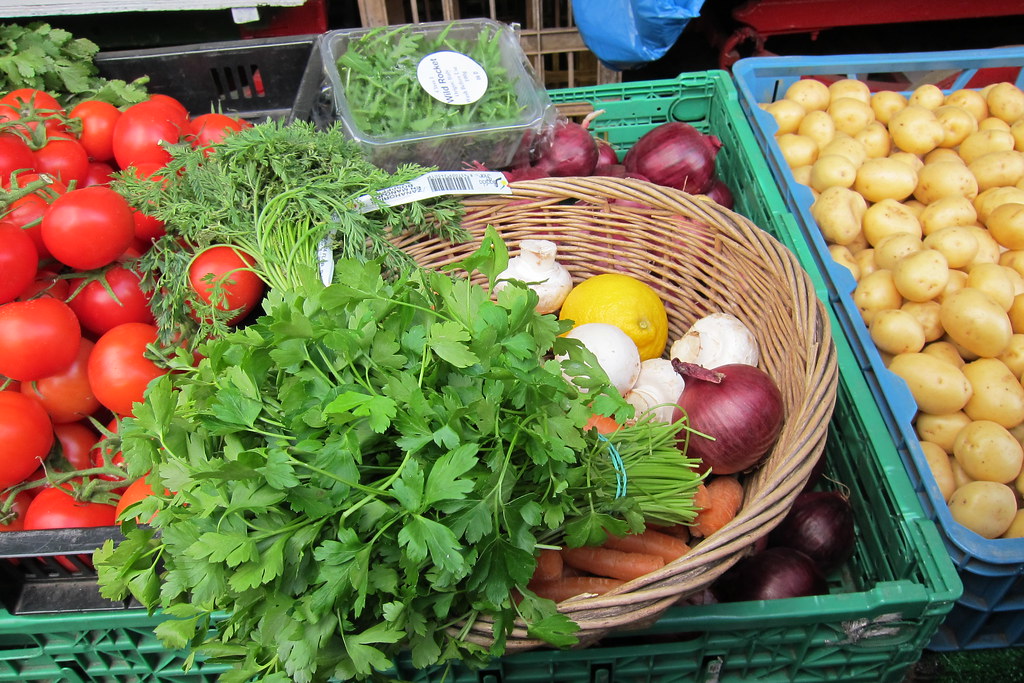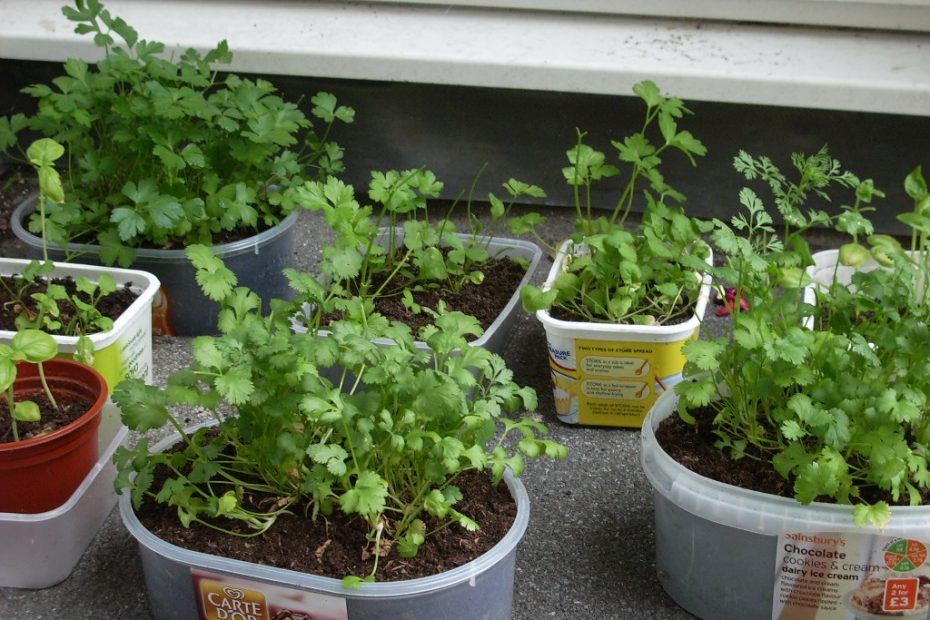Have you every thought about planting that fresh herb plant you bought from the supermarket? Well, I have tried several different methods of replanting and discovered what works best. So, can you actually plant supermarket herbs?
You can plant almost any supermarket herbs by repotting them using a fresh potting mix, larger pots, and plenty of water. The most common supermarket that can be planted include basil, parsley, and coriander.
We’ll dive into a bit more detail on how to exactly go about replanting a freshly bought herb plant. I’ll also show you how you can even just use cut herbs to regrow your own herb plant. Lastly, we’ll talk a bit about the difference between different herbs in replanting.
Planting supermarket herbs
Planting supermarket herbs is extremely rewarding and super simple if you know how to do it. You can easily transform your store-bought basil into five more basil plants that will grow those same savory leaves.
What’s more, with a little effort you can even plant freshly cut herbs from the supermarket. We just need to make sure they develop roots first before planting them. Check the final section of this article to see exactly how to do this!
Besides basil there are several other common supermarket herbs that can easily be planted. Let’s have a look at the most common herbs first and what to be away of when buying them from the store.
What supermarket herbs can you plant?
Supermarket herbs you can plant include basil, coriander, and parsley. These garden herbs will do well once planet in larger pots with fresh potting mix and given enough nutrients to thrive. Here are some things to look out for when buying a fresh plant:

- Basil: Since basil leaves are so big compared to the total size of the plant they are a fantastic indicator of the plant’s health. Instead of buying the fullest looking basil plant, get the one that is less crowded and still has some younger leaves developing.
- Parsley: This herb is fairly easy to take care of and won’t give you too much trouble when replanting it from stores. Look for leaves that have a healthy, dark green color. This indicates that the plant is getting enough nutrients.
- Coriander: Coriander should have a slightly lighter green color and a distinct scent. Use your olfactory sense to determine the health of a supermarket coriander plant.
However, what most people do when buying fresh supermarket herbs is leave them in the same pot they came in. They water them regularly but are surprised when the plant dies after just a few days. Sound familiar?
Why supermarket herbs don’t survive
There are several reasons why a store-bought herb plant will not thrive at home when left to its own devices. Let’s look at the most common reasons why supermarket herbs usually die so we can prevent these when replanting them:
- Space: One of the main reasons the plant dies after just a few days is that it does not have enough space. The pots you buy at the store are usually full of seedlings and way overcrowded. As a result, the roots of each plant do not have enough space to expand.
- Nutrients: Because of the lack of space for the roots to expand the plants cannot get enough nutrients from the soil. You may see the leaves shrivel; this is not a sign of too little water but rather too little food.
Luckily, with some little extra effort, we can make sure to not only keep the plant alive but to have it multiply and grow by replanting it. Let’s see how that is done!
How to plant supermarket herbs
Planting supermarket herbs is no rocket science and just required you to keep a few simple things in mind. If you’ve done it once correctly you will soon find that there is no more need to buy herbs from the store since you’ve cultivated your own herb garden.
As mentioned previously you even have the option of planting cut supermarket herbs. While it’s a bit more challenging than planting the entire store-bought plant it can certainly be done with great success.
First, we’ll look at how to plant cut supermarket herbs and then how to plant entire plants:
Cut herbs

With cut herbs we first need them to grow roots before planting them in the soil if they have any chance to survive. Growing roots from fresh herb cutting is best done hydroponically. This means that we’ll only put the herb cuts in water. To ensure that the cut herbs thrive make sure to:
- Use filtered water: Depending on where you live tap water may contain a lot of unwanted chemicals and minerals. These can impede the development of roots from cut herbs. A simple active-coal filter can remove most of the unwanted chemicals and excess calcium while preserving important minerals.
- Leave space to breathe: When putting your cutting in water make sure to leave some space at the top of the jar for the plant to take in oxygen. Try filling the vessel only 3/4 with water so that there is plenty of space between the bottom leaves and the water surface.
- Protect the roots from sunlight: Sunlight or any light for that matter can inhibit root growth and lead to the formation of algae. To ensure optimal conditions for cut herbs to grow roots, use a jar with dark glass, a mug, or shield the jar from light, e.g. with cardboard.
Entire plants
Planting entire supermarket herb plants is a bit simpler since you don’t need them to develop roots first; there are already there! The trick with entire plants is to remember that the pots they come in actually have grown from many seedlings and are frequently overcrowded. So here’s what to keep in mind:
- Larger pots: Use a larger pot than the one you bought the plant it came in. This will give the roots enough space to expand and the plant a better chance to survive in a new environment.
- Drainage: Make sure the pot you are using has sufficient drainage. Standing water in herb pots can cause mold or the rotting of roots. Neither of which will contribute to a healthy herb plant.
- Fresh potting mix: Discard the supermarket soil and use a fresh potting mix instead. Since plants typically spend several days or weeks in an overcrowded pot the soil will likely be devoid of nutrients.
- Split: Remember that the plant you are buying at the supermarket consists of several seedlings. Splitting the supermarket herb and separating the roots wherever possible will not only yield more plants but also increase the chance of each to survive.
Conclusion
Planting supermarket herbs is no magic; all it takes is a little knowledge and care. One of my favorite ways to grow plants is actually from seed but one of the most efficient ways is actually to get full-grown plants from the store.
I’ve seen the most success when cutting a healthy-looking stem from a store-bought herb and then using the hydroponic method to develop its roots. After that, I find that the newly formed plant is much stronger and resilient.
“Herb garden” by sermoa is licensed under CC BY-SA 2.0; “Winter Herb Garden – Parsley and Basil” by Campobello Island is licensed under CC BY-NC-SA 2.0; “Vegetables and Herbs” by rp72 is licensed under CC BY 2.0
- Are Herbs Perennial? - January 29, 2021
- Can Herbs Survive Winter? - January 28, 2021
- Can Dogs Eat Herbs? - January 27, 2021
